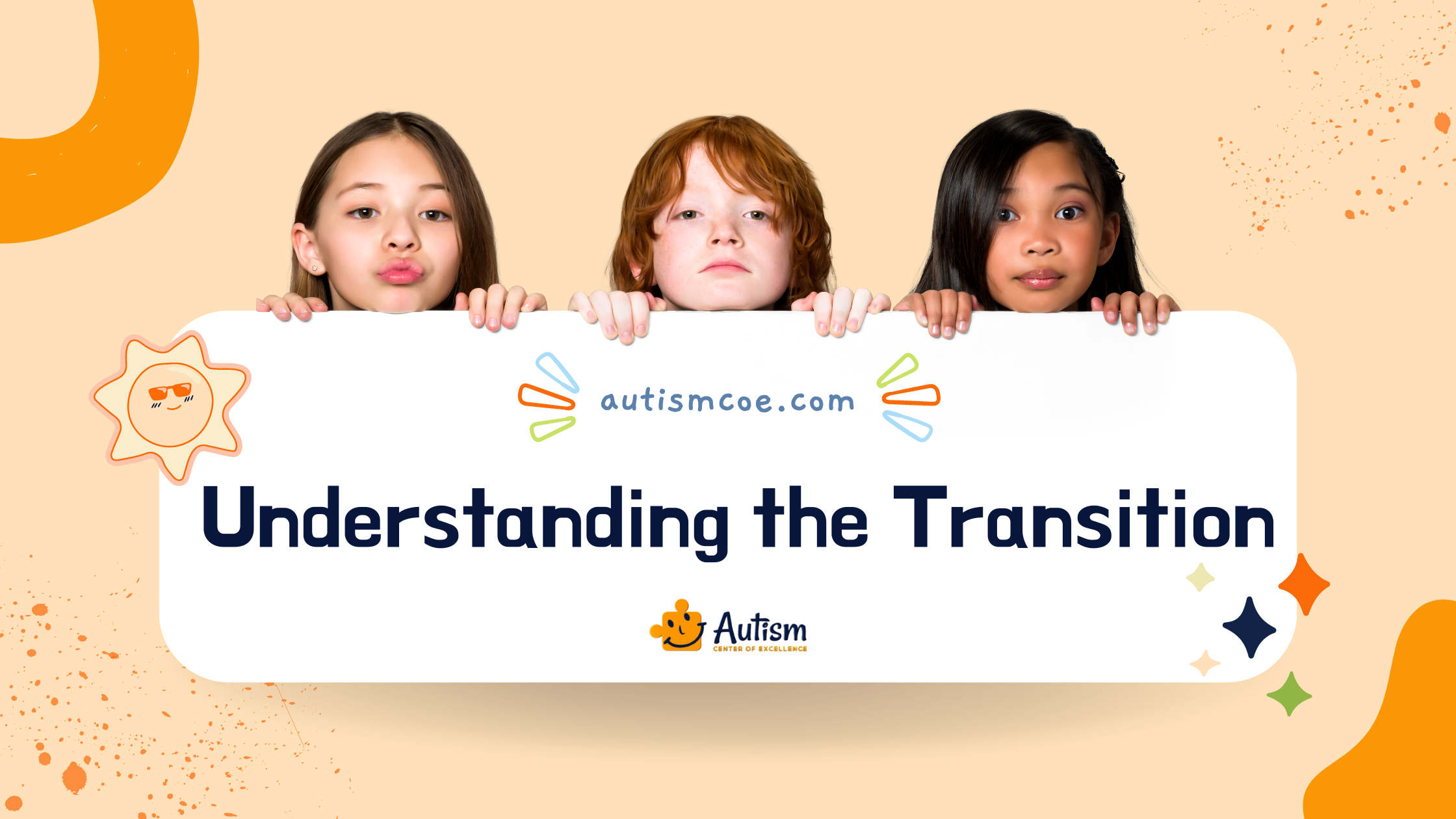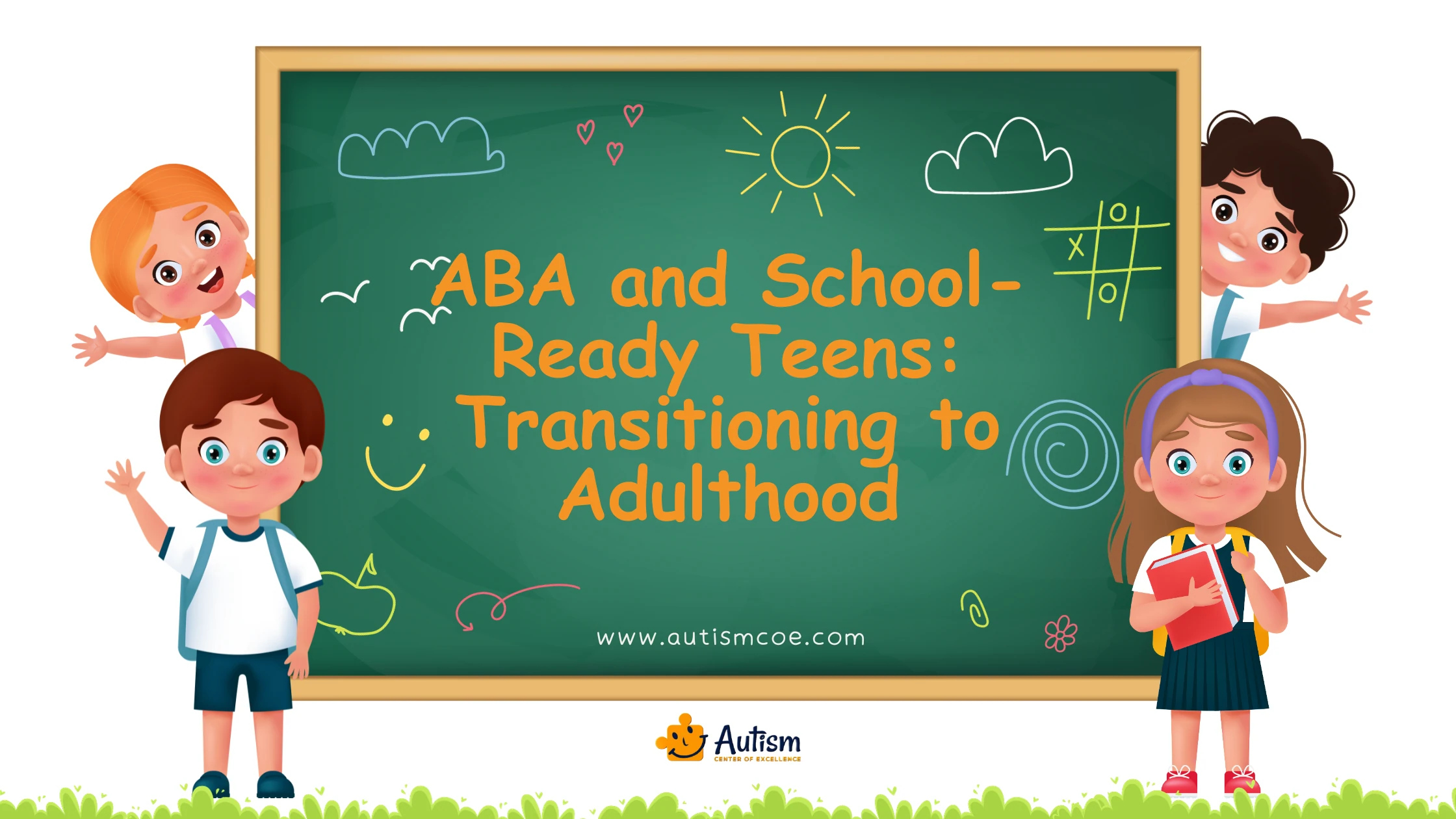From childhood to adulthood, there are a lot of milestones and challenges, especially for teenagers preparing to leave school. The transition is even tougher for students with special needs. ABA therapy was originally meant for teenagers displaying behavior problems and has become very useful for school-ready teenagers who are hasty to start their adult life. This article will investigate the ways in which teaching children essential skills using ABA Methods will enable them to transition into adulthood in a more confident and smooth manner.
Understanding the Scope of School Readiness for Autistic Teens
Understanding the scope of school readiness for autistic teens involves recognizing and addressing various areas that can impact their success in the educational environment. Here are key points to consider:
- Academic Preparedness: Ensuring that teens have the foundational knowledge and skills required for their grade level.
- Social Skills: Helping teens navigate social interactions, build friendships, and understand social cues.
- Emotional Regulation: Teaching strategies to manage stress, anxiety, and other emotions that may arise in a school setting.
- Routine and Structure: Establishing a consistent daily routine to provide stability and predictability.
- Communication Skills: Enhancing both verbal and non-verbal communication abilities, including the use of assistive technologies if needed.
- Sensory Needs: Identifying and accommodating any sensory sensitivities or preferences to create a comfortable learning environment.
- Self-Advocacy: Encouraging teens to express their needs and preferences and to seek help when necessary.
- Independence: Fostering skills that promote independence in daily tasks, such as organization, time management, and self-care.
- Transition Planning: Preparing for changes in routines or environments, such as moving from middle to high school, to reduce anxiety and ensure a smooth transition.

Understanding the Transition
The term “transition” in different contexts signifies shift, change, or move from one phase, condition, or state to another. It’s a process of evolution, and transitions, as an essential part of life, are filled with challenges and growth.
When referring to teens, especially those with autism, “the transition” typically alludes to the significant shift from adolescence to Adulthood. This progression isn’t just about growing older; it encompasses numerous facets:
Educational Shifts:
Transitions from curriculum-based school settings to higher education, vocational training, and lifelong learning pursuits
Social Changes:
The development of relationships with friends, family, and the wider society in general, and the emerging trend to be more engaged in community life.
Emotional and Cognitive Development:
With growth, the teen undergo changes in their emotional and cognitive capacities. They start building their individualities, questioning existing dogma, and wondering about the essence of purpose and the future.
Financial Independence:
Transition often requires taking upon financial roles from pocket money to stipends to full-blown financial autonomy.
Physical Development:
This period is especially characterized by very fast physical transformations among teenagers; their bodies mature, and there is a lot of learning to do in order to cope with everything that is associated with this process.
Vocational Transitions:
For most, the late teens and early twenties initiate a career path for them be it full-time employment, internships, or undertaking their own business.
The teen with autism has more difficulties with the transitions because of sensory sensitivities, Communication Difficulties, and other associated factors of their condition. Thus, discussing “the transition,” is an admission of this large and varied change in life – a rite of passage that with the right help and understanding, can be manageably worked through.
How Can Daily Living Skills Empower Teens with Autism for a Successful Transition to Adulthood?
Understanding the Importance of Daily Living Skills
- Foundation for Independence: The mastery of daily tasks is the foundation of self-sufficient living.
- Boosted Self-Esteem: Gaining autonomy in day-to-day activities leads to more self-esteem and self-confidence.
- Safety and Well-being: Mastering vital skills guarantees safety and comfort in different circumstances.
Key Daily Living Skills Every Teen Should Learn
- Personal Care: Fundamentals such as grooming, dressing, and personal hygiene.
- Home Management: Services like cleaning, laundry, and minor home repairs.
- Cooking and Nutrition: Cooking simple meals, nutrition, and shopping.
- Money Management: Budgeting, banking services, and appreciation of money.
- Transportation: Public transport, maps, and traveling safety.
Strategies for Teaching Daily Living Skills
- Structured Teaching: Decompose tasks and teach in a structured way.
- Modeling: Show them how to do it.
- Use of Visual Aids: Visual aids, charts, or applications to help them with their tasks.
- Real-world Practice: Practice in context.
Parental and Community Involvement
- Consistency at Home: Parents should maintain a regular reinforcement of these skills at home.
- Community Programs: Get teenagers registered in community-based programs or workshops that emphasize the acquisition of skills.
- Foster a Supportive Environment: Praise and honor every achievement however little it is.
The Role of Schools and Therapists
- Integrated Learning: The daily living skills can be included in the school’s curriculum so that learning is done as a hybrid.
- Therapeutic Interventions: Occupational Therapists have a significant role in teaching and enhancing these skills.
- Peer Learning: Integrating interactions with Neurotypical Peers brings about a novel learning perspective.
The Endgame: Confidence, Independence, and a Fulfilling Adulthood
- Holistic Development: More than skills, this training develops resilience, creativity, and flexibility.
- Community Integration: Having acquired important skills, people can take an active part in the life of the community and make a contribution.
- Personal Growth: With each skill that these individuals master, they slowly make their way toward the day when they make their own success and live life on their own terms.
Can ABA Improve Academics, Social Skills, and Independence for Teens with Autism?
ABA is not just an approach but a lifesaver. By customizing academic courses, teenagers can study in a way that suits their talents. Socially, ABA Techniques improve peer interactions and aid in effective communication. Emotionally, resilience is the main foundation that directs the teenagers to meet the challenges. Additionally, day-to-day chores seem less burdensome which leads to a feeling of being self-sufficient.
Strategizing Transition with IEPs
The school-to-life transition is critical and full of doubts and difficulties. However, for teens with autism, this change is subtler, requiring an individualized plan for them. Introduce the Individualized Education Plans (IEPs), a weapon devised for this purpose.
1. The Essence of IEPs
IEPs are more than pieces of paper; they are promises. IEPs are developed based on an in-depth understanding of a student’s distinct strengths and weaknesses and provide a clear map of their educational path. The focus on academic aims and the social, emotional as well as functional objectives reflects a comprehensive developmental approach.
2. Collaboration: The Core of IEPs
IEP’s effectiveness is in community effort. Through the collaboration of educators, therapists, caregivers, and ABA Professionals, a comprehensive picture of the teen’s needs is achieved. All the stakeholders provide different aspects making the plan robust and flexible.
3. Goal Setting with Precision
A successful IEP defines concrete and measurable objectives. These goals are not only bold but also realistic as they are based on ABA principles from which they emanate. Every goal is broken into clear steps, whether it’s mastering a new academic skill, improving social interactions, or managing an emotional response.
4. Continuous Monitoring and Adaptability
The charm of IEPs is in their flexibility. The needs and challenges of teens develop. Consistent IEP meetings keep the plan up-to-date, modifying goals and strategies according to the current needs and successes of the teenager.
5. Preparing for Life Beyond School
Apart from academic excellence, IEPs cater to life skills that are essential for adulthood. Starting with vocational training and self-care routines, the plan sees to it that adolescents are prepared to manage the troubles of adult life. With ABA techniques combined, the move is less overwhelming and teens are able to step out into the world stronger.
Thus, IEPs specifically when combined with the ABA component resemble compasses, directing teenagers with autism through the labyrinth of adolescence and up to the doorstep of maturity. They are monuments of a collective dedication, to make sure that each teen is given the advice and help they need.
Join Our Weekly Newsletters!
Subscribe now to stay updated with our latest email updates.
Frequently Asked Questions & Answer
How does Autism Progress into Adulthood?
Autism is a lifelong developmental disorder that extends into adult life. Nevertheless, the manifestation and impact of autism on an individual change throughout the lifespan. With the passage of time children with autism may gain coping mechanisms, acquire new skills, and receive help to function in social, educational, and work settings. Early interventions and individualized support are critical to enabling individuals with autism to live a satisfying and independent life in their adult years.
How can I help my Autistic Teen with Transitions?
Transitions can be facilitated with an autistic teenager by starting early and creating a structured routine. Determine their strengths and interests for personalized transition planning. Communicate openly, provide support, and introduce changes over time. Use resources such as Applied Behavior Analysis (ABA) therapy and employ experts, schools, and support groups for advice.
Does Autism Improve in Adulthood?
Autism is a life-long neurodevelopmental state, hence, it does not usually “get better” or vanish. However, people with autism can learn, acquire, and create skills, strategies, and coping mechanisms that will help them to lead life more efficiently. By providing proper support and interventions, most people with autism can become productive and independent adults. It should be kept in mind that every autistic person’s personal journey is different, and the outcomes vary depending on the individual strengths and needs.
What is the Transition to Adulthood and Adulthood?
Adulthood transition means that period in an individual’s life where they change from adolescence into an adult. This phase undergoes a number of changes in different spheres, such as Education, social ties, self-development, and duties. Adolescence, however, is an age marked with dependence on others and leaning towards others for support in life and development. I usually comprise such activities as higher education, work, living on my own, and stable relationships.
Conclusion
Teens with autism have a unique set of challenges in transitioning into adult life. Applied Behavior Analysis (ABA) brings about outstanding progress. This transition, including schedules to college, requires exact organizing. Daily living skills are essential for independence. The united team of schools, therapists, parents, and community roles provides comprehensive support, with the latter acquiring practical skills. AutismCOE is committed: we seek to empower every teenager with autism to actualize their potential and determine their destiny, with our knowledge and resources.
Please Note: The content of this blog is for informational purposes only and should not be considered a substitute for professional medical advice, diagnosis, or treatment. Consult a qualified healthcare professional for personalized guidance tailored to your specific situation.

Bhavika Bhasin
Bhavika Bhasin is the Research and Marketing officer at AutismCOE. She works with children and adults with ASD. Her clinical research includes evaluating various available autism screening and diagnosis methods and their efficacy. She is currently developing a novel screening exam that is indicated to be more accurate than the existing available exams. She is also writes articles papers for various publications.


